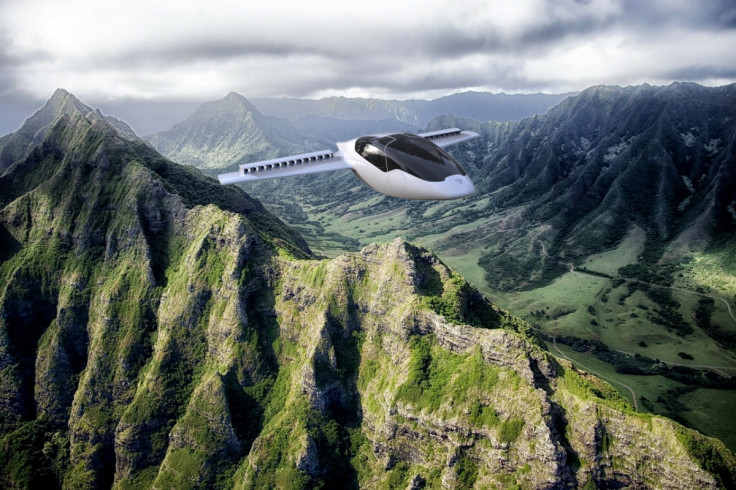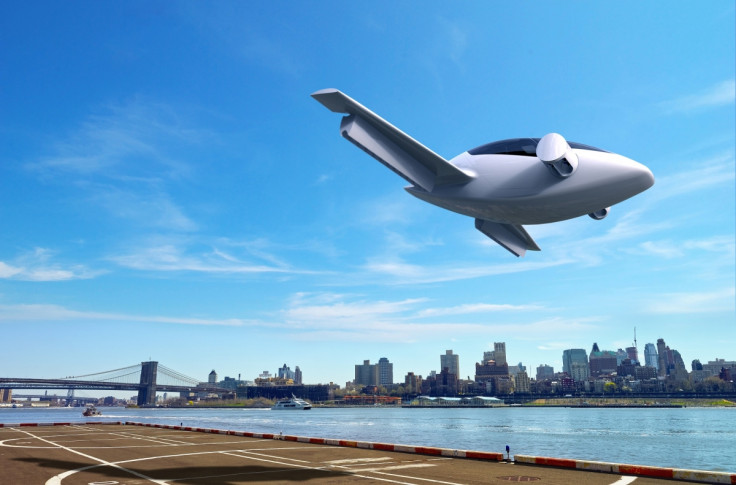Lilium Jet: World's first electric VTOL personal flight vehicle for consumers could be ready by 2018

The European Space Agency (ESA) is backing a German startup working to develop the world's first vertical take-off and landing (VTOL) personal flight jet aircraft for consumers.
Lilium Aviation, which was founded by four engineers and doctoral students from the Technical University of Munich, is part of an ESA business incubator looking to create a new class of planes that are environmentally friendly, less noisy and easier to fly than helicopters by 2018.
The firm is currently developing the Lilium Jet, an all-electric, two seater VTOL personal aircraft that features 320kW rechargeable battery-powered ducted fan engines, retractable landing gear, fly-by-wire joystick controls, wing doors, panoramic windows, an interactive touchscreen and a large amount of storage.
A computer takes care of the vertical take-off and landing and satellite navigation will help to give the vehicle a high degree of automation while compensating for wind during take-off and landing.
The Lilium Jet can travel at up to 400km/hr and has a cruising range of 500km. The ESA wants it to be a personal transportation vehicle that is used during daylight in good weather conditions, and most importantly, in uncongested airspace at altitudes of up to 3km. But there is a caveat – only people who have a pilot's licence and have completed at least 20 hours' training will be allowed to fly this vehicle.
Personal flight – who will make it happen?
Aircraft that can take-off and land vertically – similar to Doc Brown's DeLorean in Back to the Future II and spaceships seen in many sci-fi films – are available today but they are mostly used by the military, and in fact, the US military's technology arm Darpa has been running a programme challenging aerospace companies to design and build better VTOL aircraft since 2014 that has just entered its second phase.
However, outside the military, this has not stopped inventors all over the world from trying to create viable personal flight vehicles – some of which bear a resemblance to helicopters, and some of which look more like giant drones that come with a built-in chair for a pilot.

First, there's Flike, a personal flight vehicle designed by the Hungarian government's research institute Bay Zoltan Nonprofit. Flike is a tricopter that can carry a total weight – including payload – of 240kg. In April, Flike completed a successful manned test flight where it was able to hover and manoeuvre in the air while compensating for the wind, for 90 seconds.
There is also the Hoverbike by UK firm Malloy Aeronautics; the Quadro UAS personal flight vehicle built by Dutch UAV engineer Thorstin Crijns which carries 110kg of weight (including a 59kg payload); the Snowstorm multicopter dronebuilt by students from the National University of Singapore (NUS), which can carry a payload of 70kg and can stay in the air for five minutes; and most recently the Volocopter VC200 – a two-seater multicopter that can carry a 450kg payload by German firm e-volo, which features technology from Intel-owned Ascend Technologies and has been endorsed by Nasa.
And finally, a huge multicopter drone by the University of Oslo in Norway set a new Guinness World Record for the heaviest payload ever lifted by a remote-controlled multicopter drone in January, and next plans to test carrying a human into the air.
© Copyright IBTimes 2025. All rights reserved.






















